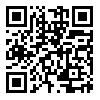

Volume 1, Issue 3 (11-2025)
مکتب نقدنظر 2025, 1(3): 0-0 |
Back to browse issues page
Download citation:
BibTeX | RIS | EndNote | Medlars | ProCite | Reference Manager | RefWorks
Send citation to:



BibTeX | RIS | EndNote | Medlars | ProCite | Reference Manager | RefWorks
Send citation to:
amani H. Criticism of traditionalist views on Islamic calligraphy. مکتب نقدنظر 2025; 1 (3) : 4
URL: http://jcr-sj.com/article-1-38-en.html
URL: http://jcr-sj.com/article-1-38-en.html
Abstract: (9 Views)
The opinions of traditionalists about Islamic art and architecture have always been cited as certain and documented in scientific and research articles without examining historical examples and documents. The same is true for calligraphy, which is considered the noblest and most distinguished Islamic art from the traditionalist perspective, and their opinions have been repeatedly used by researchers without historical validation. This critique seeks to answer the question of how the opinions of traditionalists about Islamic calligraphy relate to the history of the development and evolution of writing and the existing examples of this art. By comparing the opinions of traditionalists, especially Seyyed Hussein Nasr, about traditional Islamic calligraphy and historical written sources and existing examples, it became clear that the opinions of traditionalists about calligraphy in some cases cannot be matched with what is mentioned in the history of this art. Therefore, it seems that some of these materials have been written and expanded in general terms and cryptically, mostly in order to validate the position and importance of calligraphy as a point of transformation from spoken tradition to a written revolution in Islamic civilization as an Islamic art.
Article number: 4
Type of Study: Research |
Subject:
General
Received: 2025/10/1 | Accepted: 2025/11/1 | Published: 2025/11/1
Received: 2025/10/1 | Accepted: 2025/11/1 | Published: 2025/11/1
Send email to the article author
| Rights and permissions | |
 |
This work is licensed under a Creative Commons Attribution-NonCommercial 4.0 International License. |


